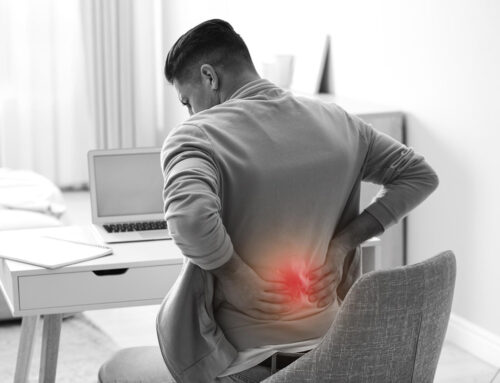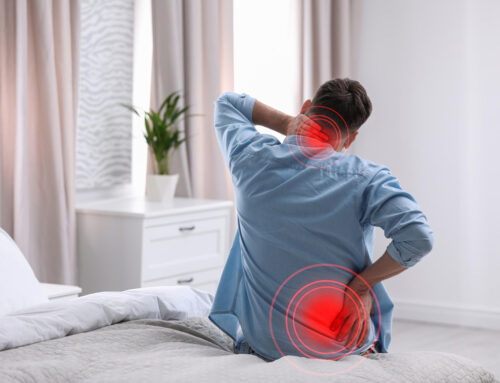Scheuermann’s disease, also known as juvenile kyphosis, is a spinal condition that primarily affects adolescents during their growth spurt period. It is characterized by abnormal curvature of the spine, which causes it to become rounded and hunched forward. This condition is relatively rare, with a prevalence rate of only 1% to 8% of the population. While it is not a life-threatening condition, Scheuermann’s disease can cause significant discomfort and pain if left untreated. In this blog post, we will explore the causes, symptoms, and treatments of Scheuermann’s disease.
Causes of Scheuermann’s Disease
The exact cause of Scheuermann’s disease remains unknown. However, there are several theories about what may contribute to the development of this spinal condition.
One theory is that Scheuermann’s disease may have a genetic component. Studies have shown that individuals with a family history of the condition are more likely to develop it themselves. Additionally, researchers have identified several genes that may be associated with Scheuermann’s disease. This includes those involved in bone development and growth.
Another theory is that environmental factors may play a role in the development of Scheuermann’s disease. Poor posture, especially during periods of rapid growth, may increase the risk of developing the condition. Additionally, a lack of physical activity may contribute to weakened back muscles, which can exacerbate spinal curvature. Nutritional deficiencies, such as low levels of calcium or vitamin D, may also be a contributing factor.
Furthermore, some experts believe that hormonal imbalances during adolescence may contribute to the development of Scheuermann’s disease. During puberty, hormones such as estrogen and testosterone can affect bone growth and development. If these hormones are imbalanced, it could potentially contribute to abnormal spinal curvature.
Symptoms of Scheuermann’s Disease
The most common symptoms of Scheuermann’s disease is an abnormally curved spine, which can cause the individual to appear hunched or rounded. Individuals with Scheuermann’s disease may also experience back pain, which can be mild or severe and can worsen with physical activity. The pain is often described as a deep ache or throbbing sensation and is typically located in the upper or middle back. Pain may also radiate down to the buttocks or legs, particularly if the curvature of the spine is causing nerve compression.
Stiffness and limited mobility in the spine are also common symptoms of Scheuermann’s disease. The curvature of the spine can make it difficult to bend or twist and may limit the individual’s ability to perform everyday activities. As the disease progresses, the curvature may become more severe, making it even more difficult to move freely.
Fatigue and muscle weakness may also be present in individuals with Scheuermann’s disease. This can be due to the strain placed on the muscles and joints of the back as they work to compensate for the abnormal curvature of the spine.
In severe cases of Scheuermann’s disease, the curvature of the spine may cause compression of the spinal cord or nerve roots. This can lead to neurological symptoms. These can include numbness, tingling, weakness in the arms or legs, or difficulty with coordination and balance.
It is important to note that the severity and type of symptoms can vary depending on the individual and the extent of their spinal curvature. Some individuals may have no symptoms at all, while others may experience significant pain and disability.
Diagnosis of Scheuermann’s Disease
During a physical examination, the doctor will assess the individual’s posture, spinal curvature, and range of motion. They may also ask about any symptoms the individual is experiencing, such as back pain or stiffness. If the doctor suspects Scheuermann’s disease, they may order imaging tests to confirm the diagnosis.
X-rays are the most commonly used imaging test for diagnosing Scheuermann’s disease. X-rays can show the degree of curvature in the spine and whether or not the individual has any vertebral wedging or other abnormalities. MRI or CT scans may also be used to provide more detailed images of the spine.
In addition to imaging tests, the healthcare provider may also order blood tests to rule out other potential causes of spinal curvatures, such as osteoporosis or a vitamin D deficiency.
Once the diagnosis of Scheuermann’s disease is confirmed, the healthcare provider will work with the individual to develop a treatment plan. This plan may include physical therapy, pain management techniques, or in severe cases, surgery.
It is important to note that early diagnosis of Scheuermann’s disease can lead to more effective treatment outcomes. Therefore, it is recommended that individuals with a family history of the condition or those experiencing symptoms such as back pain or stiffness seek medical attention as soon as possible.
Treatment of Scheuermann’s Disease
The treatment of Scheuermann’s disease is dependent on the severity of the curvature and the presence of any associated symptoms.
Physical therapy
Physical therapy is often recommended for individuals with Scheuermann’s disease, as it can help to improve posture, increase flexibility, and strengthen the muscles of the back. A physical therapist may also recommend specific exercises to address any areas of weakness or tightness in the back. Also, exercises to improve overall spinal alignment.
Medications
In addition to physical therapy, pain management techniques may be recommended to help alleviate discomfort associated with Scheuermann’s disease. These may include nonsteroidal anti-inflammatory drugs (NSAIDs) or other pain medications, heat or cold therapy, or massage.
Bracing
If bracing is necessary, a healthcare provider will usually prescribe a custom-fitted brace that is worn for a specific amount of time each day. The brace can help to prevent further curvature of the spine and support the muscles of the back, but may also limit mobility and can be uncomfortable to wear.
Surgery
In cases where surgery is necessary, a spinal surgeon will perform a procedure known as spinal fusion. During spinal fusion surgery, metal rods or screws are inserted into the spine to straighten and stabilize the affected area. This procedure is typically reserved for severe cases of Scheuermann’s disease, as it is invasive and requires a lengthy recovery period.
It is important to note that while treatment can help to manage symptoms and prevent further curvature of the spine, there is no cure for Scheuermann’s disease. Individuals with the condition may need ongoing care and management throughout their lifetime to manage symptoms and prevent complications. It is recommended to consult the top spine surgeon in India for accurate and proper treatment.
Prevention of Scheuermann’s Disease
The exact cause of Scheuermann’s disease remains unknown. However, there are several measures that individuals can take to reduce their risk of developing this spinal condition.
Maintain good posture
One of the most important steps in preventing Scheuermann’s disease is maintaining good posture. Poor posture can put undue stress on the spine, leading to curvature and deformities. Therefore, it is essential to practice good posture habits, such as sitting up straight, keeping the shoulders relaxed, and maintaining a neutral spine alignment. This is especially important during periods of rapid growth, such as during adolescence.
Regular exercise
In addition to good posture, regular exercise can also help to prevent Scheuermann’s disease. Exercise can help to strengthen the muscles of the back, which can help to support proper spinal alignment and prevent curvature. Low-impact exercises such as swimming, cycling, and walking can be particularly beneficial for individuals with or at risk of developing Scheuermann’s disease.
Healthy diet
Another key aspect of prevention is maintaining a healthy diet that is rich in essential nutrients, such as calcium and vitamin D. These nutrients are crucial for strong bone development and can help to prevent bone deformities. Foods that are high in calcium include dairy products, leafy green vegetables, and fortified cereals. Vitamin D can be obtained through exposure to sunlight. Also, through dietary sources such as fatty fish and egg yolks.
Avoid stressful activities
It is also important to avoid activities that may put stress on the spine, such as heavy lifting or sports. These activities can cause damage to the spine, which can increase the risk of developing Scheuermann’s disease.
Regular check-ups
Regular check-ups with a healthcare provider can also be helpful in identifying and addressing any potential spinal issues before they become more severe. This is especially important for children and adolescents who may be at risk of developing Scheuermann’s disease during their growth spurts.
Conclusion
Scheuermann’s disease is a condition that affects the spine, causing it to become curved and hunched. It is a relatively rare condition but can cause significant pain and discomfort. While the exact cause of the disease is unknown, it is believed to be a combination of genetic and environmental factors.
The treatment of Scheuermann’s disease is dependent on the severity of the curvature and the presence of any associated symptoms. Mild cases may be treated with exercises to improve posture, while more severe cases may require bracing or surgery. Make sure to consult the best spine surgeon in Bangalore for proper treatment.





Get Social